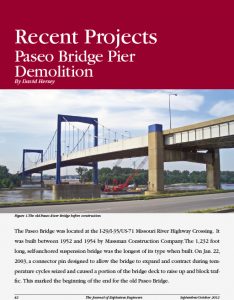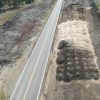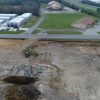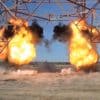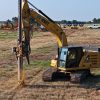PROJECT DETAILS
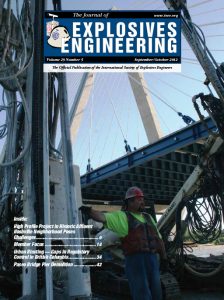 The Paseo Bridge was located at the I-29/I-35/US-71 Missouri River Highway Crossing. It was built between 1952 and 1954 by Massman Construction Company. The 1,232 foot long self-anchored suspension bridge was the longest of its type when built. On January 22, 2003, a connector pin designed to allow the bridge to expand and contract during temperature cycles seized and caused a portion of the bridge deck to raise up and block traffic. This marked the beginning of the end for the old Paseo Bridge.
The Paseo Bridge was located at the I-29/I-35/US-71 Missouri River Highway Crossing. It was built between 1952 and 1954 by Massman Construction Company. The 1,232 foot long self-anchored suspension bridge was the longest of its type when built. On January 22, 2003, a connector pin designed to allow the bridge to expand and contract during temperature cycles seized and caused a portion of the bridge deck to raise up and block traffic. This marked the beginning of the end for the old Paseo Bridge.
The Missouri Department of Transportation performed emergency repairs and then kept the old bridge functional while funding for a replacement bridge was secured. In 2005, the funding was in place and from that time forward, only minimal work was done to keep the bridge operational and safe.
The project team responsible for constructing the replacement bridge consisted of a group of 5 well established companies with long histories of successfully completed significant bridge projects. The joint venture included Clarkson Construction, Massman Construction, Kiewit Construction, Parsons, and TranSystems. Collectively they operated as the Paseo Corridor Constructors. Time was a large factor in this project so the bridge was designed and built as a part of the same contract.
Construction for the new bridge began on April 18, 2008. In order to keep traffic flowing, the new bridge was built just downstream from the old Paseo Bridge. Some approach lanes and ramps had to be moved to accommodate the construction and to keep four lanes of traffic open throughout the project. The first lane of the new bridge was opened on September 27, 2010, with the final lane of the new bridge being opened on December 18, 2010. Upon completion of the new bridge, named the Christopher S. Bond Bridge, the Paseo Bridge was then closed completely.
The US Army Corps of Engineers required that the old bridge be removed within 90 days of being closed. Dismantlement of the Paseo Bridge began in November, 2010, and continuing through the spring and summer of 2011. The demolition of the bridge was significantly hampered by a record setting flood that forced the Missouri River to be closed for several months during that spring and summer.
Notwithstanding the difficulties presented by the flooded Missouri River, the demolition phase of this project presented some unique challenges as well. The Paseo bridge was one of only two remaining self anchored suspensions bridges left in the United States and it was setting within six feet of the new Bond Bridge. It was necessary to dismantle the bridge in the reverse order in which is was originally constructed. First the bridge’s median and safety barrier was removed. Then followed the asphalt driving surface and then the underlying concrete deck was cut into rectangular pieces small enough to be handled by the onsite cranes, picked, stacked and hauled away for disposal. Water-filled weights were used to counterbalance the bridge during deck panel removal.


